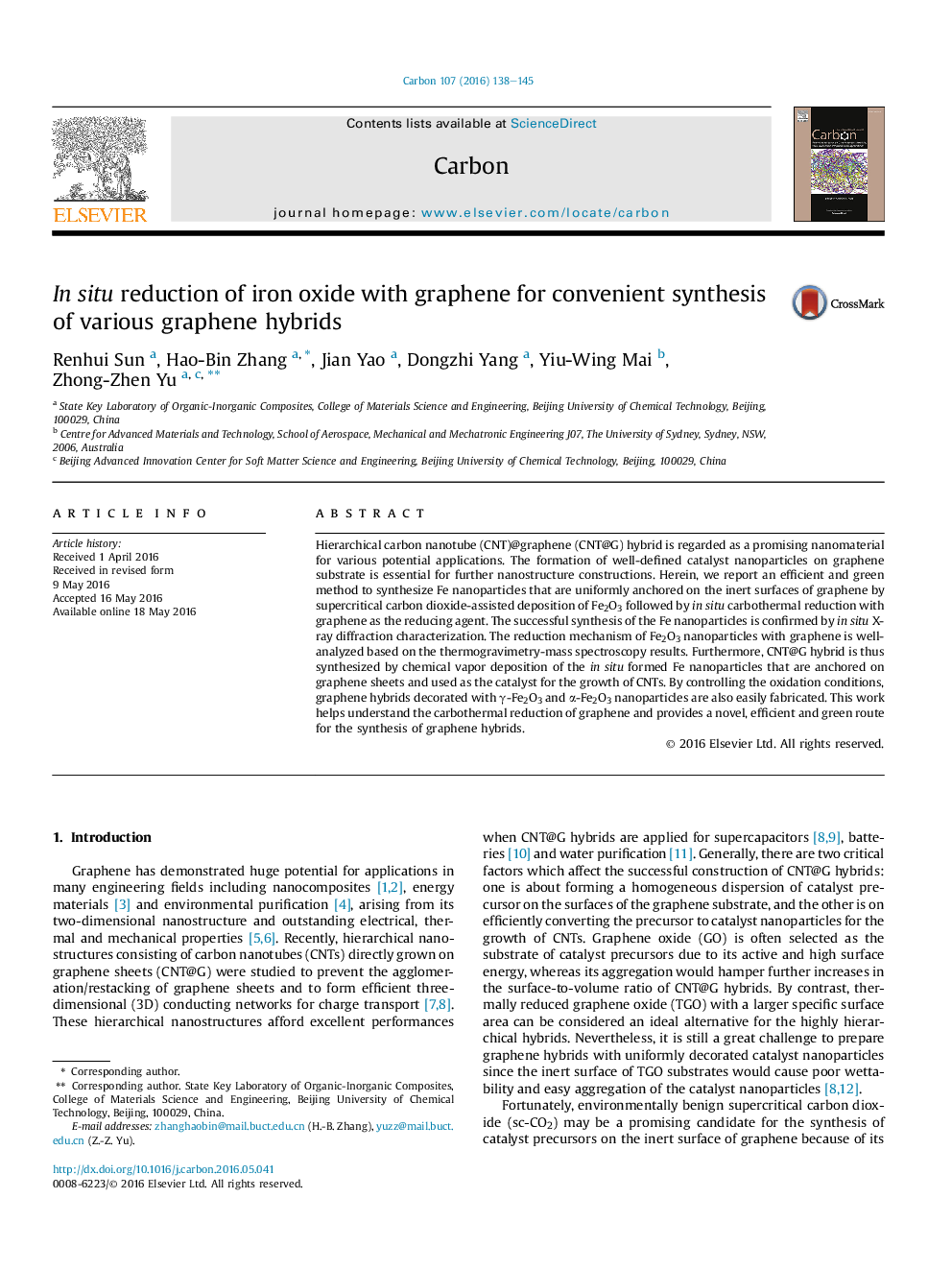| Article ID | Journal | Published Year | Pages | File Type |
|---|---|---|---|---|
| 1413088 | Carbon | 2016 | 8 Pages |
Hierarchical carbon nanotube (CNT)@graphene (CNT@G) hybrid is regarded as a promising nanomaterial for various potential applications. The formation of well-defined catalyst nanoparticles on graphene substrate is essential for further nanostructure constructions. Herein, we report an efficient and green method to synthesize Fe nanoparticles that are uniformly anchored on the inert surfaces of graphene by supercritical carbon dioxide-assisted deposition of Fe2O3 followed by in situ carbothermal reduction with graphene as the reducing agent. The successful synthesis of the Fe nanoparticles is confirmed by in situ X-ray diffraction characterization. The reduction mechanism of Fe2O3 nanoparticles with graphene is well-analyzed based on the thermogravimetry-mass spectroscopy results. Furthermore, CNT@G hybrid is thus synthesized by chemical vapor deposition of the in situ formed Fe nanoparticles that are anchored on graphene sheets and used as the catalyst for the growth of CNTs. By controlling the oxidation conditions, graphene hybrids decorated with γ-Fe2O3 and α-Fe2O3 nanoparticles are also easily fabricated. This work helps understand the carbothermal reduction of graphene and provides a novel, efficient and green route for the synthesis of graphene hybrids.
